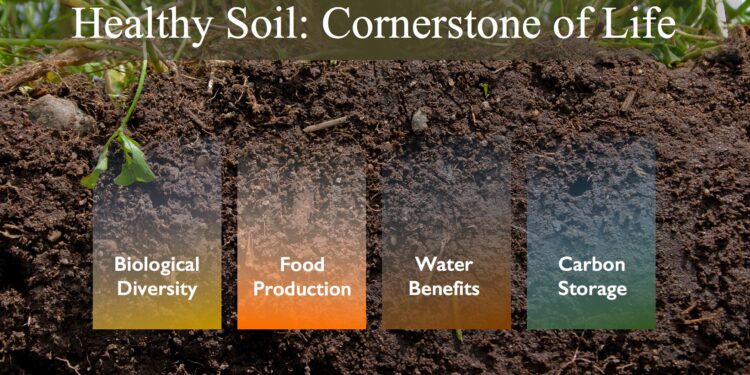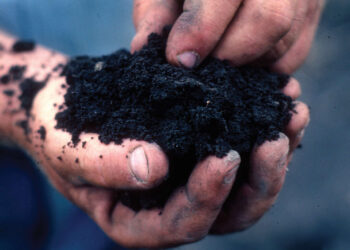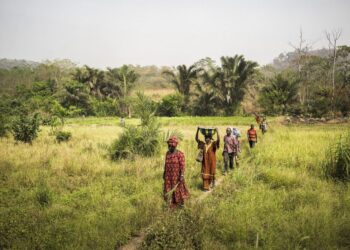Soil is one of the most essential elements found in the climate system. But often it is the most neglected one. After the oceans, it is one of the second largest carbon stores or sinks. That is it stores a huge amount of carbon within it. Depending upon the region, Climate change has affected the plant and soil in certain ways.
A disruption in climatic conditions can result in a large amount of carbon being stored in plants and soil due to vegetation growth. More amount of carbon is being released into the atmosphere as a result of degraded climatic systems. It’s a very important factor to be looked upon to maintain the quality of soil to produce crops.
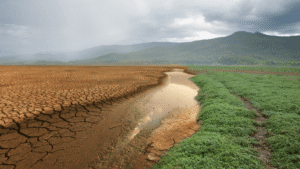
Soil is an asset for agriculture and farming. The quality of yield and cultivation highly relies on the ability of the soil to nurture it. Due to such reasons restoring key ecosystems on land and sustainable use of land in urban and rural areas can help us mitigate and adapt to climatic change.
Climate change is very natural in the atmosphere but when it exceeds its limit,s the proportion can create an imbalance in the atmosphere. Scientifically, plants draw carbon out of the atmosphere during photosynthesis.
However atmospheric carbon also affects the soil because the carbon that is not utilized for above-ground plant growth is distributed through the roots of a plant which deposit carbon in the soil. When left as it is this carbon can lock for thousands of years and become stable.
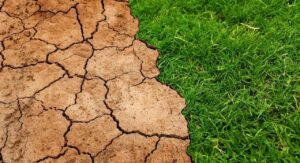
Therefore the health of the soil should be clearly monitored to mitigate climate change.
Carbon storage in soil is not uniform and depends on the type of soil. Peatlands are one of the most carbon-rich soil mostly found in Northern Europe UK and Ireland. Even grassland soil can also store a huge amount of carbon per hectare.
In comparison to this, the soil in southern Europe contains less carbon. In this article, we will be discussing the prime reasons that are responsible for degrading the soil quality and how climatic change is involved in this picture.
1. Climatic Change puts soil under pressure
High temperatures may lead to more vegetation growth and more carbon stored in the soil for example in some parts of Europe the temperature has crossed its limits and it’s becoming a huge concern. However, the mineralization and decomposition of the organic matter in the soil also increase with the increase in temperature thus reducing the organic carbon content.
On the other hand, due to low levels of oxygen in water, carbon-containing organic matter in stable peatlands is prevented from decomposing. But the organic matter can quickly break down releasing carbon dioxide into the atmosphere if such areas dry out.

These are the symptoms that soil moisture content is being affected by rising temperature and changes in precipitation patterns. An increase in the concentration of Co2 in the atmosphere can result in the microbes in the soil working faster to break down organic matter which can potentially release more carbon dioxide.
However, the overall effect cannot still be predicted but it is very clear that a warming climate can lead the soil to release more greenhouse gases which can further heat the climate in a self-reinforcing spiral.
2. Agriculture to keep the carbon underground
Surely climatic changes are responsible for making soil a carbon sink but the way we use land can have a clear influence on the amount of carbon that the soil can hold. According to a report, the carbon stock of European forests is increasing due to environmental changes as well as changes in the pattern of forest management.
A few centimeters of soil can take thousands of years to form and therefore its protection is essential. Organic agriculture uses manure inputs, it can rebuild the soil’s organic carbon deep below the soil surface. Therefore the adoption of appropriate farming and forestry practices can help in restoring the soil and removing Co2 from the atmosphere.
3. Soil protecting the cities
During the time of the flood, the quality of soil has a huge impact. Water can run off the field carrying sediments with it. Certain measures can be adopted to prevent this condition such as planting cover crops in the winter when the soil is bare and thus at risk of flooding. This also helps in restoring natural systems.
Healthy soil delivers services such as flood Regulation and prevention. Similarly, there are many ways in which the quality of soil will dictate how climatic change can affect us. For example, permeable soil can also protect from heat waves by storing a large amount of water and keeping temperatures down.

4. Restoring Ecosystem and climate change
According to research in the European Commission Joint Research Centre the best way to increase organic carbon in the farmed soil is to convert arable land to grassland. But unfortunately between 1990 and 2012 the area of arable land, permanent crops, pastures, and semi-natural vegetation decreased in several regions of Europe.
This happened as a result of urban development projects that involved sealing the soil with an impervious layer. This also raises concerns about food security. The health of the soil should be kept in check to reduce greenhouse gases. If managed correctly the soil can to worst effects of climatic change.
But if we will fail to care for it this can exacerbate the problems connected to climatic change and can adversely affect various fields of agriculture farming food production which is a threat to mankind and the ecosystem.

